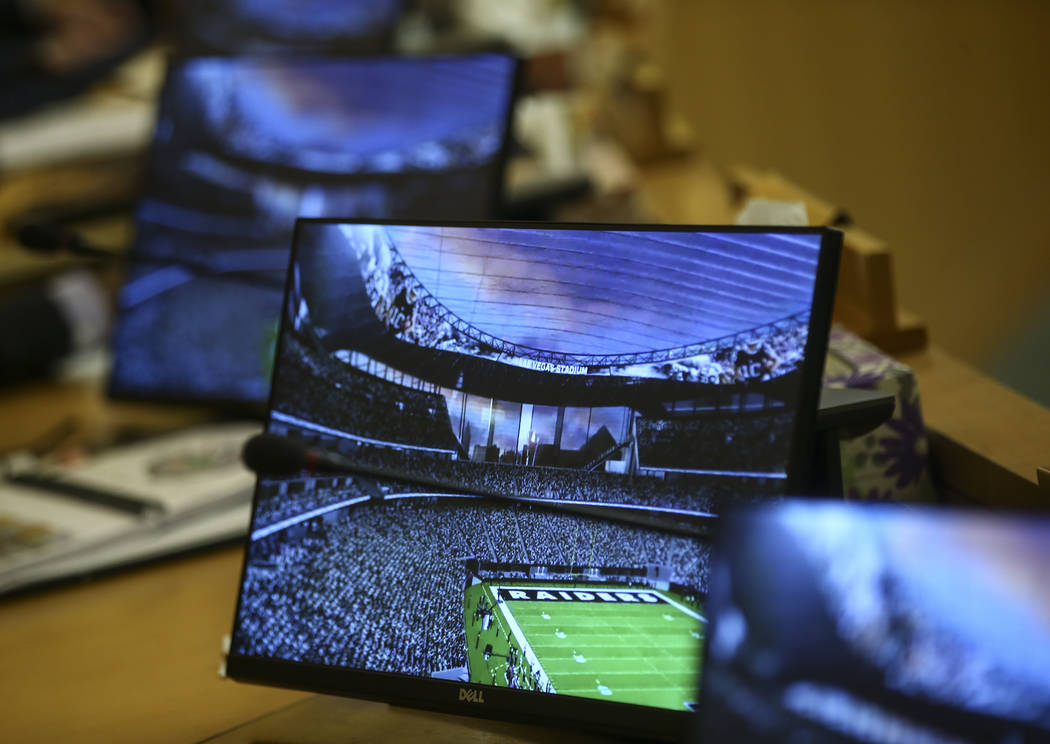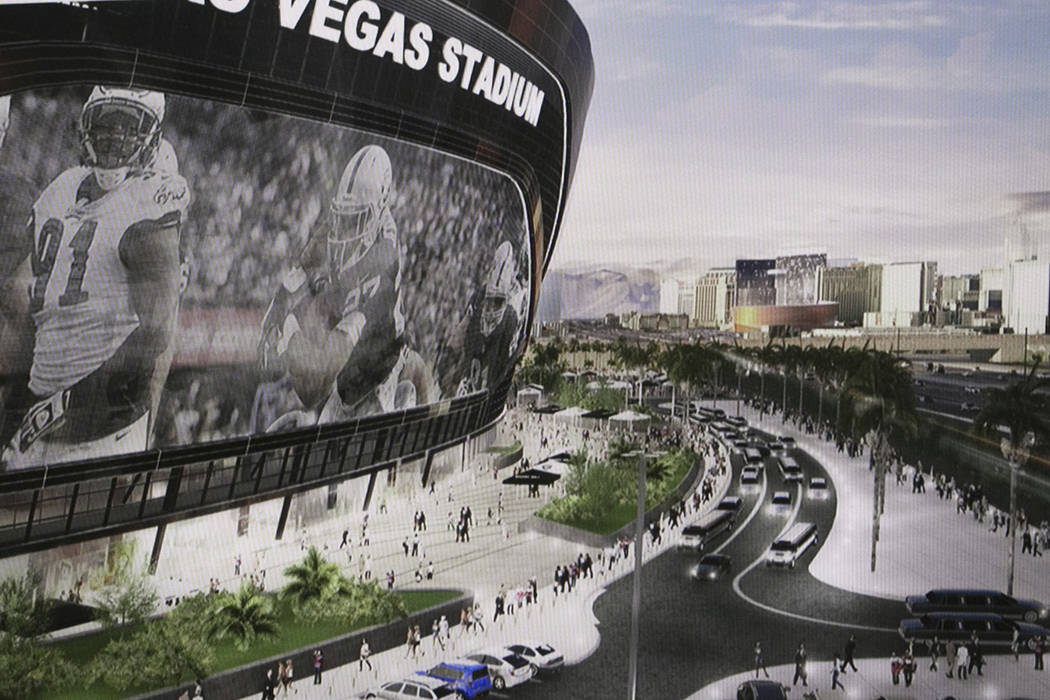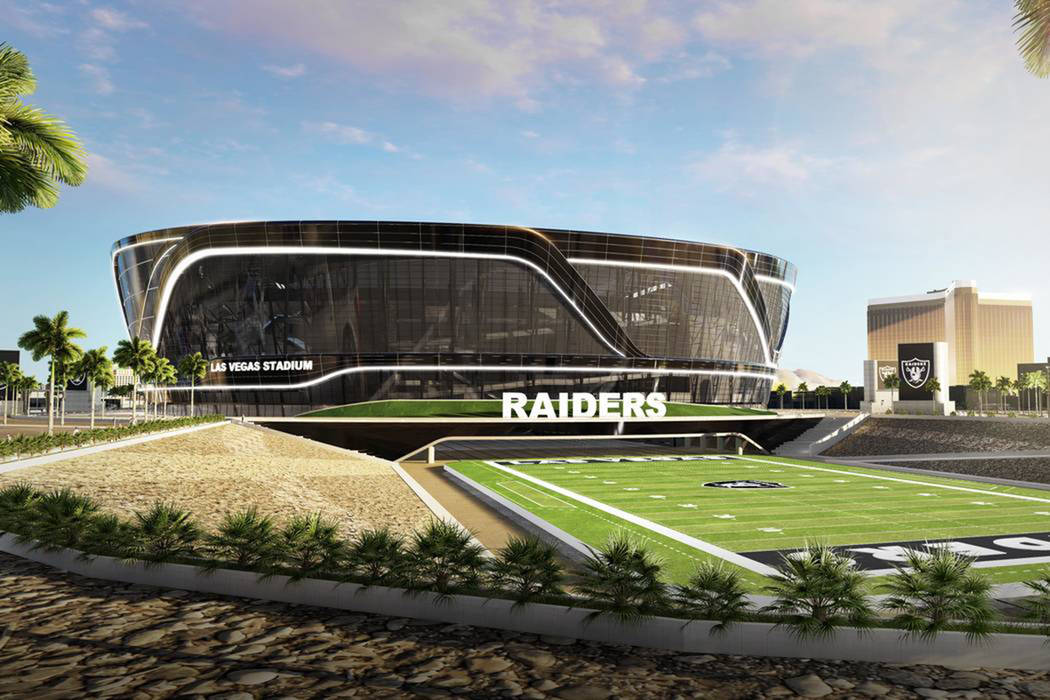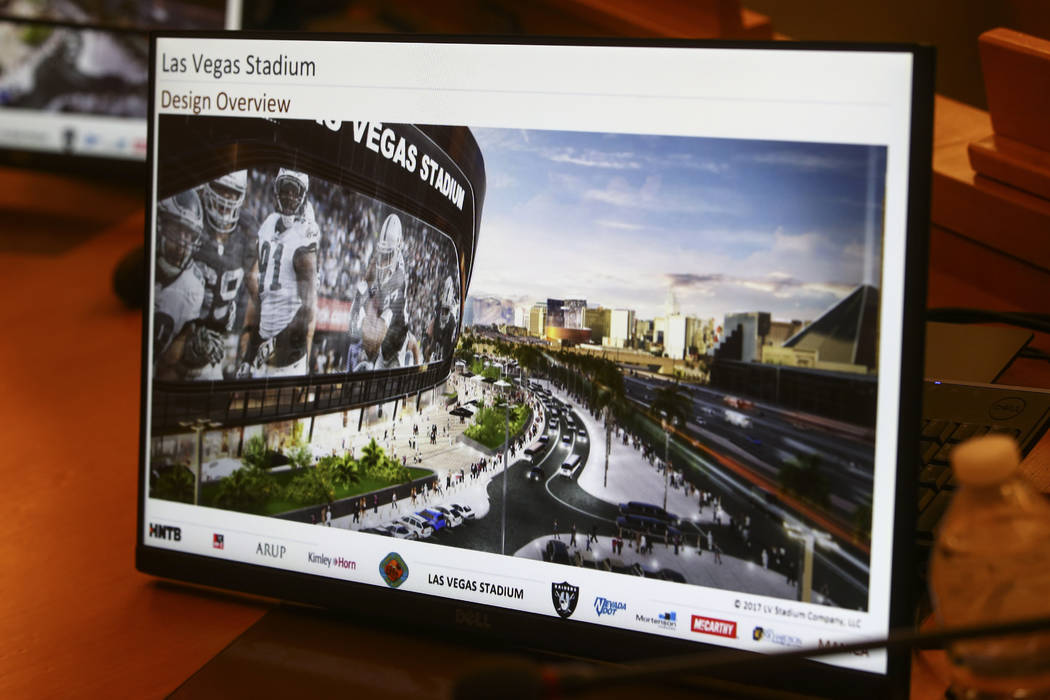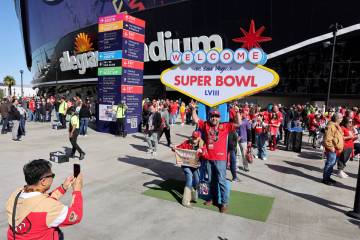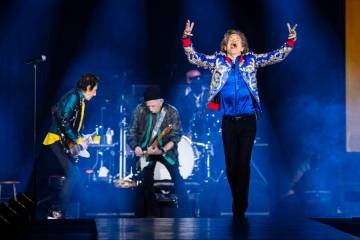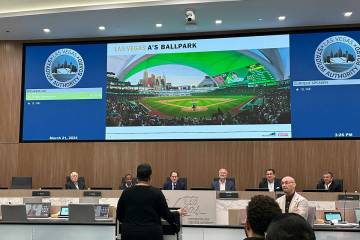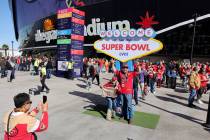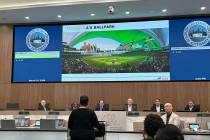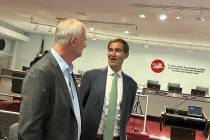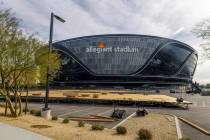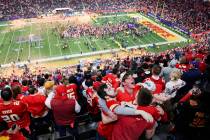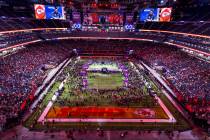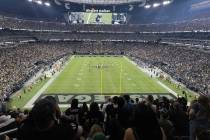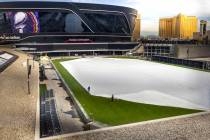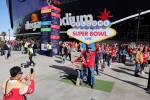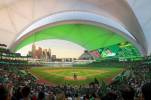County gives go-ahead to building Las Vegas Raiders stadium
After an hour of presentations, questions and answers Wednesday before the Clark County Commission, the only suspense in commission chambers was whether the vote on use permits, waivers and design reviews for the Oakland Raiders’ planned 65,000-seat, domed football stadium would be unanimous.
And it was.
The 7-0 affirmative vote, which included a yes from longtime stadium critic Chris Giunchigliani, enabled the Raiders to clear another hurdle in the team’s pursuit of relocating to Southern Nevada for the start of the 2020 football season.
County staff had recommended approval, and Commission Chairman Steve Sisolak, a candidate for governor in 2018, has shepherded the project through government reviews for months. The final outcome never seemed in doubt, though the Raiders have yet to solve the problem that has dogged them since the first day the site was purchased by the team for $77.5 million on May 1 — a lack of adequate parking on the 62 acres at Russell Road and Interstate 15.
The approval by the county gives the Raiders a year to develop a parking strategy as construction starts.
Parking a priority
Stadium construction consultant Don Webb, a principal and co-founder of California-based Cordell Corp., and project principal John Wood of Mortenson Construction, Minneapolis, said reaching a conclusion on the parking issue is a priority to the Raiders, not because regulators are demanding it but because the team sees solving it as a critical piece to the team’s tailgating culture.
“It will be solved,” Webb said later in the presentation, adding that building a parking garage isn’t a viable solution because of the tailgating experience.
The county vote approved permits for 20 uses on the land: retail sales and service, restaurants, offices, live entertainment, alcohol sales and a museum among them.
The “museum” is for the development of a Raiders Hall of Fame.
The vote also approved a series of nine waivers, the most critical of which was the 85.4 percent reduction in the number of required parking spaces from 16,250. The county is giving the team time to develop a strategy to determine where fans will be able to park their cars offsite and deliver that strategy before stadium construction is complete.
Team officials that gave presentations to the board admitted the parking issue was the most concerning for the project.
The staff analysis of what has been determined as a high-impact project affecting traffic, parking, utilities, emergency services and storm drainage for the adjacent neighborhood explained the Raiders’ pedestrian circulation plan, which includes new pedestrian overpasses from the east side of I-15. The team also is planning mass transit from shuttle buses and the Las Vegas Monorail, which would need to be extended to Mandalay Bay, as well as taxi and ride-hailing options.
The final vote concluded a series of matters involving the stadium.
Late Tuesday, the team received word that its 225-foot-tall stadium would not pose a hazard to commercial or military aircraft flying through Southern Nevada in a final report issued by the Federal Aviation Administration.
The FAA had given preliminary approval that the stadium represented no hazard, and only the Air Line Pilots Association filed a comment with concerns about reflective materials used to build the stadium, high-intensity floodlights and a large video screen on the east side of the building could affect the vision of pilots landing at McCarran International Airport less than a mile and a half away.
Little doubt on FAA approval
Because Mandalay Bay is taller than the planned stadium and sits between the stadium site and McCarran, it was not surprising when the FAA ruled that stadium’s height would not affect flight patterns.
Earlier Wednesday, as representatives of the Raiders waited for the commission to wade through several zoning and site plan requests on other projects, the Las Vegas Stadium Authority staff issued a memorandum recommending that a final construction and design contract targeted for October approval be delayed, probably until February. The delay isn’t expected to affect the construction timeline.
A drainage channel relocation issue discovered last week also appears to be a nonissue for the project.
A 6-by-15-foot box culvert buried 2 feet beneath the surface of the stadium site will have to be moved in a project that would be overseen by the Army Corps of Engineers.
Sisolak said the relocation project isn’t complicated, but it was an unexpected additional step in the construction process that will cost the Raiders an estimated $1 million.
Contact Richard N. Velotta at rvelotta@reviewjournal.com or 702-477-3893. Follow @RickVelotta on Twitter.
Approval delay
The staff of the Las Vegas Stadium Authority has recommended an extension of the scheduled approval of a final construction and design contract with the Raiders on the development of the stadium.
The delay isn't expected to set back the construction timeline for the stadium project, but the Raiders will assume additional risk because they would begin clearing the stadium site before securing a final contract approval.
Under new plans, final approval of the construction and design contract would occur in February, 2½ months after construction crew are expected to begin clearing the 62-acre stadium site and blasting a 20-foot bowl for the stadium interior.
Jeremy Aguero, principal of Las Vegas-based Applied Analysis, told authority board members in a memo released Wednesday the extension would be considered at next week's authority board meeting.



